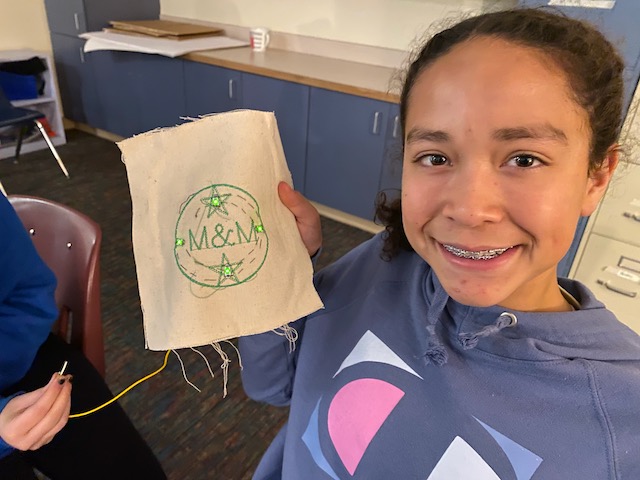The Beartown Play: A Play Written, Enhanced, and Performed by 6th Graders
I often give my students choice and voice which I discussed in my blog post, Giving Students Choice and Voice.
This project, written, enhance, and performed by 6th graders, was truly an example of voice and choice along with having them do a Type III enrichment project. Three 6th grade girls began this project last year in their gifted class as a stop-motion animation. They asked if they could continue it as a play when I become their gifted education teacher. I said, “Absolutely,” and provided some guidance and coaching as they worked on it all semester (about 3 hours per week).
This project could be classified as Type III enrichment as described in The Enrichment Triad Model developed by Joseph Renzulli, a leader and pioneer in gifted education. Type III Enrichment incorporates investigative activities and the development of creative products in which students assume roles as firsthand investigators, writers, artists, or other types of practicing professionals (https://renzullilearning.com/wp-content/uploads/2019/08/TheEnrichmentTriadModel.pdf).
For this project the girls:
- Wrote, refined, and formatted their script so it included dialogue that it sounded good and was grammatically correct, was formatted like a TV or movie script, had stage directions and good narrations.
- Created a broadway show type program designed in Canva.
- Included sound effects from the internet and uploaded into Google Slides in a way that made sense to their sound technician
- Included commercials written and recorded to be satires of local commercials.
- Made technology-enhanced costumes using fairy lights, Turtlestitch embroidered/LED lit patches, micro-bit/neopixels, and circuit playgrounds.
They elicited the assistance of 6th grade friends for the performance at our school’s talent show.
The Script
As stated above, the story was conceptualized and began the previous. The girls asked to continue it as a movie during this school year. We spent months revising it. I acted as a coach, pointing out plot holes and grammatical errors along with assisting them in formatting it in a standard script form.
Inserting Sound Effects
Recording Self-Composed Commercials
Making Costumes
The girls made patches for their story characters designing them in Turtlestitch, a browser-based educational programming language (Snap!) to generate patterns for embroidery machines, and then sewing them with an embroidery machine.


One student decided to light up her character’s patch using Lilypad lights. This was her first time sewing so she was rightfully proud of herself.


The girls used fairy lights to create head decorations and they coded Neopixels and Circuit Playgrounds to light up the other actors’ costumes.


Creating the Playbill Program
The girls examined Broadway Playbills and then used Canva to create their own.
The Performance
The video below contains some of the excerpts from the talent show performance (note that the girls only had a few rehearsals with their classmates and none in the gym using the mics that were used during the talent show.
Standards Addressed
Common Core State Standards – ELA
- Write narratives to develop real or imagined experiences or events using effective technique, relevant descriptive details, and well-structured event sequences.
- Engage and orient the reader by establishing a context and introducing a narrator and/or characters; organize an event sequence that unfolds naturally and logically.
- Use narrative techniques, such as dialogue, pacing, and description, to develop experiences, events, and/or characters.
ISTE Standards for Students
- Students leverage technology to take an active role in choosing, achieving and demonstrating competency in their learning goals, informed by the learning sciences.
- Students communicate clearly and express themselves creatively for a variety of purposes using the platforms, tools, styles, formats and digital media appropriate to their goals
NAGC Standards
- Students with gifts and talents demonstrate their potential or level of achievement in their domain(s) of talent and/or areas of interest.
- Students with gifts and talents demonstrate growth in personal competence and dispositions for exceptional academic and creative productivity. These include self-awareness, self-advocacy, self-efficacy, confidence, motivation, resilience, independence, curiosity, and risk taking.
- Students with gifts and talents develop competence in interpersonal and technical communication skills. They demonstrate advanced oral and written skills and creative expression. They display fluency with technologies that support effective communication and are competent consumers of media and technology.




Leave a comment